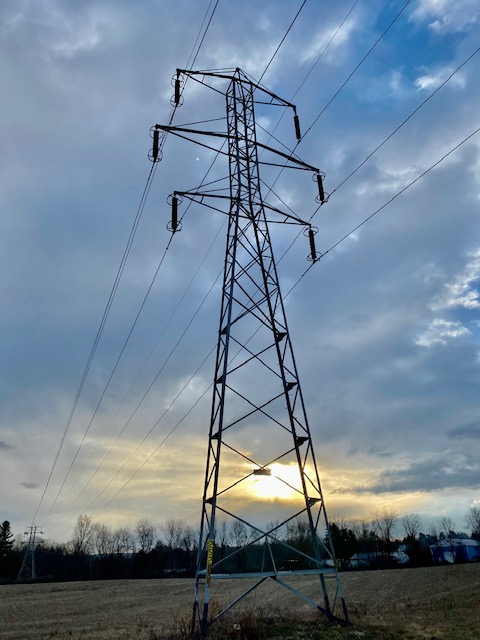| Author | Message | ||
Aesquire |
In a spacecraft, while coasting, yep. The ISS other than brief orbital corrections doesn't have acceleration, and no Atomic Pile powering the thing. The HOPE and other thermal nuclear rockets though are designed for minutes or hours of running. You get out towards Mars and solar energy gets really expensive in terms of mass. A fission power plant, or "in 20 years" fusion, is needed.. What makes the dusty plasma fission fragments rocket impressive isn't the heat radiators, that's SOP on anything with an on-board power source. ( If You were foolish enough to make a diesel spaceship, you'd need radiators too ) The nifty part is the low mass of propellant needed. In a chemical rocket, like the V2 or Titan, the propellant is the fuel...The power source. You burn kerosene and LOX, or other fuels, and the chemical reaction heats the "smoke" and spits it out to get thrust. In a nuclear thermal rocket, like NERVA, your fuel is in the reactor, that you pump Liquid Hydrogen propellant through, to heat up and spit out for thrust. Ditto with the Pluto project Atomic ramjet for the ( thankfully cancelled ) SLAM. The Uranium in The core is fuel, air is propellant. In the dusty plasma fission fragments rocket, the fuel is also the propellant. Heavy stuff going really fast glowing brightly. It's all about Newton's third law. Toss stuff out the back, go forward. Mass & speed. Because the speed is the multiplier ( acceleration ) it dominates the math. But the math runs into practicality. Light stuff is easier to accelerate than heavy stuff. That's why Hydrogen is a common fuel in these things, it's just easier to speed it up than lead or the hydrocarbons from burning kerosene. ( unfortunately it's also less dense, so you need a bigger heavier propellant tank. And a nasty problem in cryogenics, leaks, and spontaneous explosions ) With Dusty plasma fission fragments rocket the propellant is heavy AND going fast. Win! Of course you've got an ongoing critical chain reaction in an open can out back and you don't want to wave your exhaust at a satellite, the Kzinti Lesson applies. | ||
Ebutch |
 | ||
Hootowl |
The high in Houston Monday is forecast to be 27. The low, 12. Snow all day. In Houston. Global warming my arse. | ||
Tpehak |
Today is 0 Celsius in Seattle and some snow is coming. | ||
Aesquire |
https://www.zerohedge.com/markets/power-bills-moon -chaos-shock-electricity-prices-across-us-explode Uh oh. Wish I had a well. But my Imperial Majesty doesn't like peasants. | ||
Cupcake_mike |
the wholesale electricity market is going crazy, like 25x higher than normal. (Message edited by cupcake_mike on February 14, 2021) (Message edited by cupcake_mike on February 14, 2021) | ||
Aesquire |
https://9gag.com/gag/aEpRP6o Cleaning solar panels | ||
Aesquire |
https://www.powerlineblog.com/archives/2021/02/why -texas-has-gone-dark.php | ||
Ratbuell |
...and keep in mind, Sniffy Joe has opened up our power grid to companies and equipment from...well...anywhere. Including China. Especially China. https://www.sgtreport.com/2021/01/biden-hands-over -control-of-americas-power-grid-to-communist-china / Thanks to China Joe, Beijing now has direct access to a key piece of American national security infrastructure, and all under the guise of combating the ever-present boogeyman known as “climate change,” with “public health” and “science” also thrown in for good measure. | ||
Court |
Here's some information. Overview of ALL Executive Orders. https://www.federalregister.gov/presidential-docum ents/executive-orders/joe-biden/2021 Biden Executive Order. https://www.whitehouse.gov/briefing-room/president ial-actions/2021/01/20/executive-order-protecting- public-health-and-environment-and-restoring-scienc e-to-tackle-climate-crisis/ Background on Executive Orders related to Securing the Bulk Power System. https://www.energy.gov/oe/bulkpowersystemexecutive order Actual Trump Order. https://www.federalregister.gov/documents/2020/05/ 04/2020-09695/securing-the-united-states-bulk-powe r-system I'd also suggest, for a rudimentary understanding, reading the stuff I have to be trained on annually. https://www.nerc.com/pa/Stand/Pages/CIPStandards.a spx | ||
Aesquire |
https://www.breitbart.com/economy/2021/02/16/rolli ng-blackouts-across-13-states-beyond-texas/ How can you tell unintended consequences of faulty assumptions and incompetence, from Enemy Action? | ||
Ratbuell |
Good information, Court. Thank you. Reading the legal-ese doublespeak in the background document, it sounds like they haven't totally opened the door to infiltration, yet, completely...but maybe in the future, but they don't know yet. If I were the suspicious type, I'd say they put a pause on submissions for 90 days so they could figure out how to get products from CCP into the system undetected - either by giving the CCP time to develop clean shadow companies and backgrounds that would be "above" suspicion when they submitted for approval...and giving the CCP time to send over enough cash to make it worthwhile to the administration to let it happen in the first place. If I were the suspicious type. I think the White House is simply banking on Americans' ignorance on the whole topic. "All the power system does is make electricity, how could that be attractive to an enemy state? There's no way for China to tap into a power line and steal our electricity...." | ||
Aesquire |
https://www.breitbart.com/politics/2021/02/16/indi an-police-arrest-activist-tied-to-greta-thunbergs- support-of-farmers-protest/ It's not about science. It's about Power. | ||
H0gwash |
wholesale electricity market is going crazy, like 25x capitalism can be ruthless  | ||
Ratbuell |
Especially when it has to foot the bill for stupidity... TRUE capitalism would recognize the futility of "renewable" energy, and would stick with what WORKS, all the while making IT cleaner, safer, and more efficient. Not throwing wads of subsidy cash at something that doesn't work, in an attempt to make it more popular. THAT, is not capitalism. It's cronyism. Coal works. Oil works. Nuke works. Regardless of weather conditions. They are all getting more efficient and reliable and clean, due to capitalism. Cronyism is forcing people to adopt less efficient, less reliable versions in the name of "progress" - wind, solar, NG. We see how reliable they are, when Ma Nature throws a curve ball. "Supplemental", sure. "Primary", not so much. | ||
Aesquire |
Uh... When did Natural Gas become unreliable? There must be a gap in my knowledge or a change in propaganda? It's colder, longer, here in Lake Ontario region than Texas. We don't get as many tornados and the Thunderstorms ( all clouds ) are much lower in altitude and fury, but Texas doesn't have Lake Effect snow where there are bands across the area that dump 3 feet overnight after picking the moisture off Eire & Ontario. ( then the next day the band moves and the next town over gets hammered ) Only had one good thunder snow storm so far. I really need a "Sun room" to enjoy those. | ||
Ratbuell |
Uh... When did Natural Gas become unreliable? Since....this: https://duckduckgo.com/?q=frozen+gas+wells&ia=web Wellheads are freezing solid, killing production and causing the industry to dig into reserves. And causing prices to skyrocket. | ||
H0gwash |
https://www.statesman.com/story/news/politics/2021 /02/15/rolling-texas-blackouts-2-million-without-p ower-statewide/6752280002/ I'm not sure how liberal the Austin American Statesman is, but I'm sure I'll be notified. According to their story on recent events, "Texas’ grid uses a mix of energy sources. According to the grid’s 2020 figures, the largest energy source was natural gas plants, which supplied 40%. Wind overtook coal as the grid’s second-largest source for the first time last year with 23%. Coal supplies 18%, followed by nuclear at 11%. Solar provides 2%" My understanding is also that Dan Woodfin, senior director of system operations of the Electric Reliability Council of Texas, stated most of the power knocked offline recently came from thermal sources particularly natural gas. | ||
Court |
Yeah. :-)  | ||
Hootowl |
That’s right, H0g. But we’ve also lost wind, from blades icing up. Combine those two losses with people using way more gas than they normally do, and there are pressures on supply. Oh, and the AAS is quite Liberal  | ||
Hootowl |
The good news is that there are huge salt domes here that store vast quantities of gas. The bad news is that some of the refineries (remember that natural gas is methane, ethane, propane, butane, and a bunch of other stuff, and you only want the methane component running your furnace) are offline, and the gas in those domes has to be cleaned up before it can be piped into homes. Supposed to be above freezing tomorrow. Ice storm tonight. 55 Saturday and 70 next week. | ||
Blake |
"capitalism can be ruthless" Capitalism has brought more health and prosperity to more people than any other economic system. Big govt Leftist control has wrought vastly more oppression, poverty, suffering, genocide, and mass death than anything else in the world. So yeah, a free market can be tough at times, but it's still ten times better than any other economic system ever devised. | ||
Blake |
And subsidized "green" energy sure isn't free market. Natural gas wellheads are freezing? Huh? How does that happen??? | ||
H0gwash |
Hope it gets back to normal quick. | ||
H0gwash |
True, the sins of the familiar are better and certainly more welcome than the sins of the unfamilliar. I just hope price spike caps are in place for consumers. Although upon a deeper reading, an event of this magnitude is a threat to larger corporate suppliers too. | ||
Blake |
This morning ties the all time record low for Gregg county Texas if this reported value holds. It beats the 3ºF February record low set on 02/02/1951 by 7ºF, and it's a full 24ºF below the record low for February 16th set back in 1909: Record low of -4ºF was set on January 18th, 1930, and it's the only Gregg country daily record low below 3ºF.  | ||
Ratbuell |
Natural gas wellheads are freezing? Huh? My understanding is, NG as it comes out of the ground has natural moisture in it. Texas...being Texas...probably hasn't gone to the trouble of insulating their wellcap buildings against freezing temperatures that...never happen in Texas. I'm guessing that will change. | ||
Aesquire |
They don't freeze in PA. -4 is common. | ||
Hootowl |
That’s correct, Rat. It’s full of water and other stuff that has to be refined out. Hydraulic fracturing increases the amount of water vapor present in the extracted gas, and pretty much all gas wells are ••••••• in tx. Wells aren’t generally protected against this because it doesn’t get that cold here. Hmm. Never mind. What, I can’t say fra(ked? Is this a battlestar galactica forum? | ||
Aesquire |
Naval history buffs & sci-fi. |